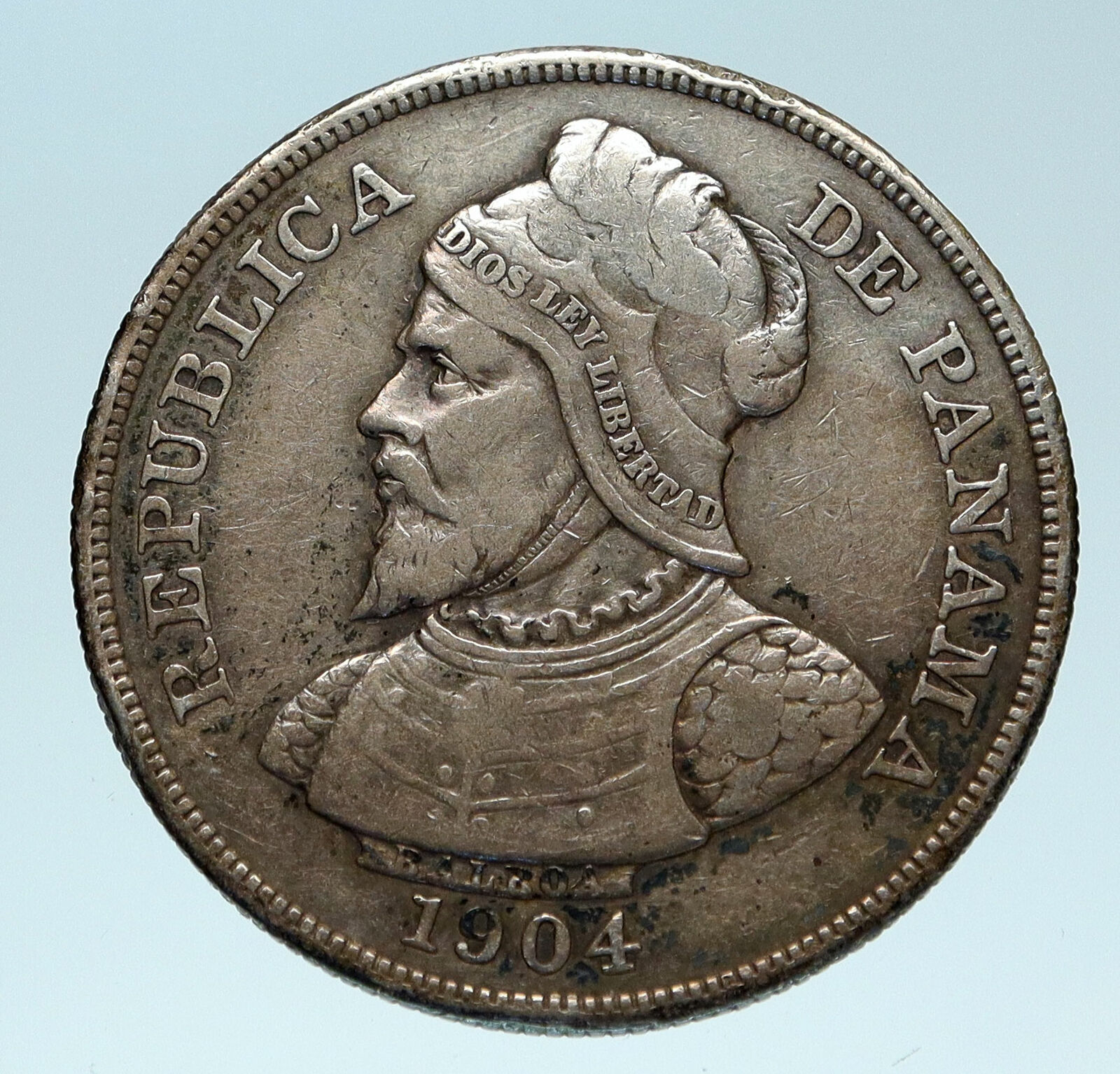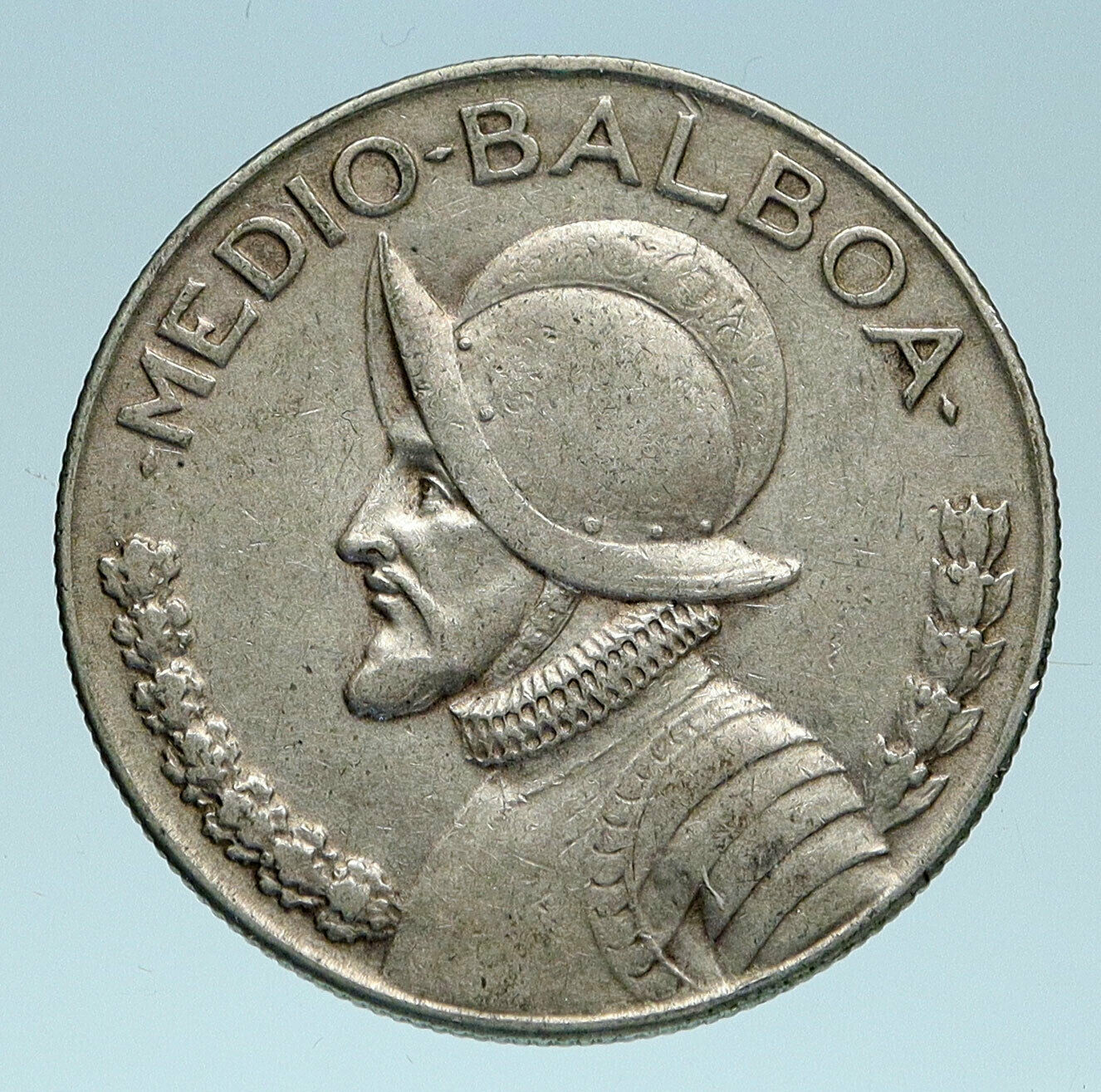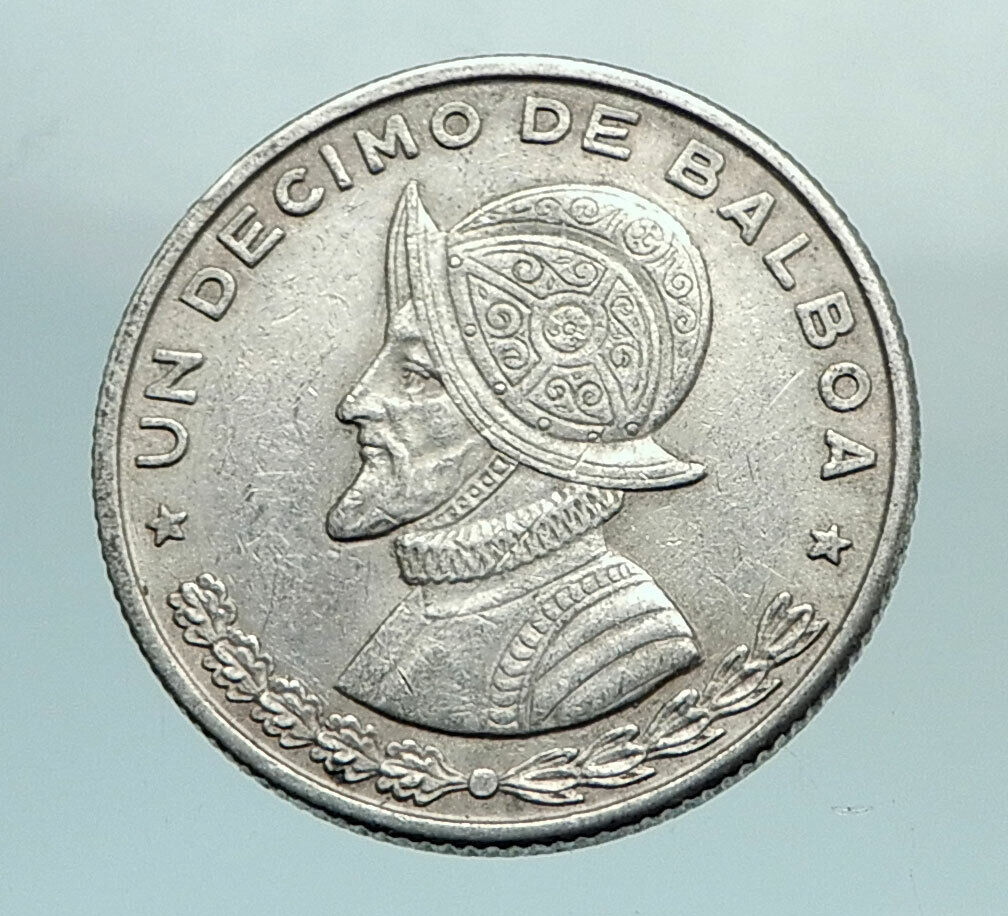|
Panama
1932 Silver 1/2 Balboa 30.6mm (12.50 grams) 0.900 Silver (0.3617 oz. ASW)Reference: KM# 12.1 (1930, 1932-34, 1937)
MEDIO BALBOA, Bust of Balboa left.
REPUBLICA PANANA LEY GR 0.90. 12.60, around the coat-of-arms of Panama.
You are bidding on the exact item pictured, provided with a Certificate of Authenticity and Lifetime Guarantee of Authenticity.
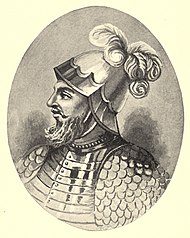 Vasco Núñez de Balboa (c. 1475 – around January 12-21, 1519) was a Spanish explorer , governor , and conquistador . He is best known for having crossed the Isthmus of Panama to the Pacific Ocean in 1513, becoming the first European to lead an expedition to have seen or reached the Pacific from the New World . Vasco Núñez de Balboa (c. 1475 – around January 12-21, 1519) was a Spanish explorer , governor , and conquistador . He is best known for having crossed the Isthmus of Panama to the Pacific Ocean in 1513, becoming the first European to lead an expedition to have seen or reached the Pacific from the New World .
He traveled to the New World in 1500 and, after some exploration, settled on the island of Hispaniola . He founded the settlement of Santa María la Antigua del Darién in present-day Panama in 1510, which was the first permanent European settlement on the mainland of the Americas (a settlement by Alonso de Ojeda the previous year at San Sebastián de Urabá had already been abandoned).
 Panama, officially the Republic of Panama, is the southernmost country of Central America and the whole of North America . Panama, officially the Republic of Panama, is the southernmost country of Central America and the whole of North America .
Situated on the isthmus connecting North and South America, it is bordered by Costa Rica to the west, Colombia to the southeast, the Caribbean to the north and the Pacific Ocean to the south. The capital and largest city is Panama City , whose metro area is home to nearly half of the country’s 3.6 million people.
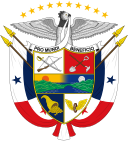 .svg/375px-Panama_(orthographic_projection).svg.png) Panama was inhabited by several indigenous tribes prior to settlement by the Spanish in the 16th century. It broke with Spain in 1821 and joined a union of Nueva Granada , Ecuador , and Venezuela named the Republic of Gran Colombia . When Gran Colombia dissolved in 1831, Panama and Nueva Granada remained joined, eventually becoming the Republic of Colombia. With the backing of the United States, Panama seceded from Colombia in 1903, allowing the Panama Canal to be built by the U.S. Army Corps of Engineers between 1904 and 1914. In 1977, an agreement was signed for the total transfer of the Canal from the United States to Panama by the end of the 20th century, which culminated on 31 December 1999. Panama was inhabited by several indigenous tribes prior to settlement by the Spanish in the 16th century. It broke with Spain in 1821 and joined a union of Nueva Granada , Ecuador , and Venezuela named the Republic of Gran Colombia . When Gran Colombia dissolved in 1831, Panama and Nueva Granada remained joined, eventually becoming the Republic of Colombia. With the backing of the United States, Panama seceded from Colombia in 1903, allowing the Panama Canal to be built by the U.S. Army Corps of Engineers between 1904 and 1914. In 1977, an agreement was signed for the total transfer of the Canal from the United States to Panama by the end of the 20th century, which culminated on 31 December 1999.
Revenue from canal tolls continues to represent a significant portion of Panama’s GDP, although commerce, banking, and tourism are major and growing sectors. Panama has the second largest economy in Central America and it is also the fastest growing economy and the largest per capita consumer in Central America. In 2013, Panama ranked 5th among Latin American countries in terms of the Human Development Index , and 59th in the world. Since 2010, Panama remains the second most competitive economy in Latin America, according to the World Economic Forum ‘s Global Competitiveness Index. Covering around 40 percent of its land area, Panama’s jungles are home to an abundance of tropical plants, animals and birds – some of them to be found nowhere else in the world.
|





 Vasco Núñez de Balboa (c. 1475 – around January 12-21, 1519) was a Spanish explorer , governor , and conquistador . He is best known for having crossed the Isthmus of Panama to the Pacific Ocean in 1513, becoming the first European to lead an expedition to have seen or reached the Pacific from the New World .
Vasco Núñez de Balboa (c. 1475 – around January 12-21, 1519) was a Spanish explorer , governor , and conquistador . He is best known for having crossed the Isthmus of Panama to the Pacific Ocean in 1513, becoming the first European to lead an expedition to have seen or reached the Pacific from the New World . Panama, officially the Republic of Panama, is the southernmost country of Central America and the whole of North America .
Panama, officially the Republic of Panama, is the southernmost country of Central America and the whole of North America .
.svg/375px-Panama_(orthographic_projection).svg.png) Panama was inhabited by several indigenous tribes prior to settlement by the Spanish in the 16th century. It broke with Spain in 1821 and joined a union of Nueva Granada , Ecuador , and Venezuela named the Republic of Gran Colombia . When Gran Colombia dissolved in 1831, Panama and Nueva Granada remained joined, eventually becoming the Republic of Colombia. With the backing of the United States, Panama seceded from Colombia in 1903, allowing the Panama Canal to be built by the U.S. Army Corps of Engineers between 1904 and 1914. In 1977, an agreement was signed for the total transfer of the Canal from the United States to Panama by the end of the 20th century, which culminated on 31 December 1999.
Panama was inhabited by several indigenous tribes prior to settlement by the Spanish in the 16th century. It broke with Spain in 1821 and joined a union of Nueva Granada , Ecuador , and Venezuela named the Republic of Gran Colombia . When Gran Colombia dissolved in 1831, Panama and Nueva Granada remained joined, eventually becoming the Republic of Colombia. With the backing of the United States, Panama seceded from Colombia in 1903, allowing the Panama Canal to be built by the U.S. Army Corps of Engineers between 1904 and 1914. In 1977, an agreement was signed for the total transfer of the Canal from the United States to Panama by the end of the 20th century, which culminated on 31 December 1999.

